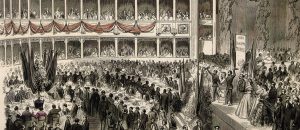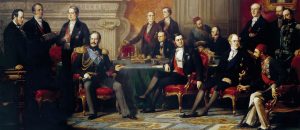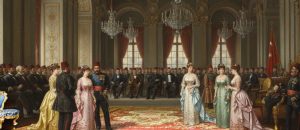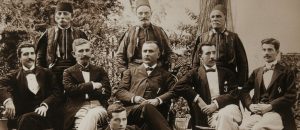The hundreds of large-scale canvas paintings adorning the walls of Dolmabahçe Palace represent the sharpest and most radical revolution in Ottoman court art: the replacement of the traditional art of miniature, which had dominated court art for centuries, with Western-style canvas painting. This shift was not merely a difference in artistic taste, but a revolution in worldview. The enormous walls of Dolmabahçe rendered the introverted and stylized art of miniature, confined to the pages of books, obsolete; instead, they necessitated large-scale paintings that reflected the empire’s new, outward-looking, and realistic perspective. This was, in the truest sense of the word, a revolution on the wall. [Link: Dolmabahçe Palace Collections -> /explore/palace-collections]
Miniature Art: The Inner World on the Pages of a Book
Traditional Ottoman court art was founded on miniatures produced in workshops called the “nakkaşhane.” Miniatures were small-scale paintings that decorated manuscripts (histories, divans, books of kings). The main characteristics of this art were:
- Two-Dimensionality: Three-dimensional illusionistic techniques specific to Western painting, such as perspective, light, and shadow, were not used. Figures and spaces were depicted in a flatter, more schematic way.
- Stylized Narrative: The goal was not to copy reality one-to-one, but to narrate an event or story in a symbolic and decorative language.
- Dependence on the Book: Miniatures were not made to be hung on a wall, but to be viewed up close as part of a book. Their world was an intimate and internal one, limited by the pages of the book.
- Anonymity: They were generally unsigned works, reflecting the collective style of the workshop rather than the individual genius of the artist.
This art form was in perfect harmony with the smaller-scale, intimate rooms and the culture of book reading at Topkapı Palace.
The Rise of Canvas Painting: A Window to the World
The construction of Dolmabahçe Palace created the physical and ideological conditions that brought about the end of miniature art. [Link: The palace’s enormous, high-ceilinged, and bright halls -> /tavanlar-sutlar-ve-bosluklar-dolmabahcenin-ic-mekan-mirmarisi-neden-bir-guc-gosterisidir], presented vast blank walls that could not be filled with a small-scale art like the miniature. These walls were practically made for large-scale canvas paintings.
More importantly, the new worldview represented by the palace coincided with the philosophy of canvas painting. Since the Renaissance, canvas painting in the West had been seen as “a window to the world.” The sense of depth created by the use of perspective, and the realistic depictions of figures and spaces, gave the viewer the feeling of being inside the painting. This was a modern, outward-looking perspective that sought to perceive and display the world as it was—and that was precisely what Dolmabahçe represented.
Sultan Abdülaziz: The Patron of Canvas Painting in the Palace
The most significant driving force behind this revolution was [Link: Sultan Abdülaziz -> /avrupa-seyahati-ve-sanat-tutkusu-sultan-abdulazizin-dolmabahceyi-batinin-kultur-elcisine-donusturmesi], who was himself passionate about art. The Sultan pursued a conscious policy of creating a painting collection to fill the palace’s empty walls and to reinforce the empire’s modern image.
- Commissions to Foreign Artists: He commissioned dozens of works from famous European artists of the period, such as the Russian marine painter Ivan Aivazovsky and the Polish court painter Stanisław Chlebowski. These paintings often depicted the power of the Ottoman navy, the beauties of Istanbul, or heroic scenes from Ottoman history.
- Support for Local Artists: He supported the first Turkish painters trained in the West, such as Şeker Ahmed Pasha and Osman Hamdi Bey, and included their works in the palace collection.
- Growth of the Collection: The palace’s painting collection was gradually enriched through diplomatic gifts and purchases from Europe.
Today, this collection is displayed as a priceless art heritage in the National Palaces Painting Museum.
Conclusion
In conclusion, the formation of Dolmabahçe Palace’s painting collection documents a revolution in Ottoman court art, where the miniature was quietly buried in history and replaced by canvas painting. This is not just the story of a change in technique or style, but of how a civilization fundamentally altered its way of looking at the world. The transition from the internal and stylized world of book pages to the realistic and outward-looking “window” of the canvas is the most aesthetic and enduring proof of the mental transformation brought about by the Dolmabahçe era. The walls of the palace are the most important witnesses to this silent yet powerful revolution.
















